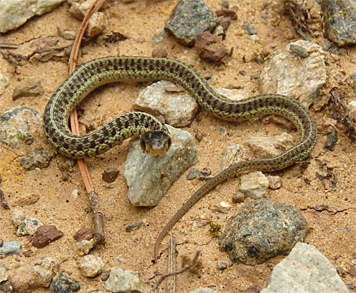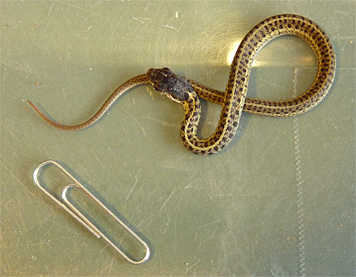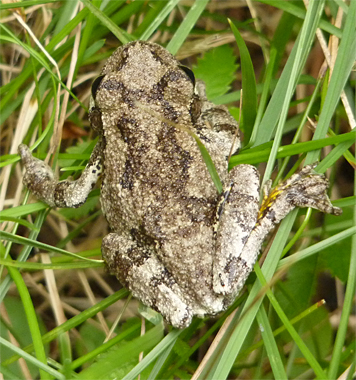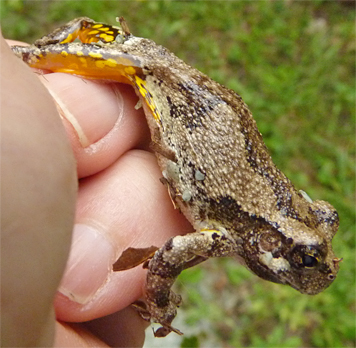
Pointed out to me by Summer Camp Counselor, Meghan, outside the doorway to the Lep Lab at the Butterfly House, the little snake in the image above was a bold snake, considering it was only six or seven inches in length.

Garter snakes are ovoviviparous which means that the female produces eggs but retains the eggs internally until they hatch so that live young emerge from the female. They are said to produce 7-85 young per liter. That seems like a very wide range.
While researching the liter size of Eastern Garter Snakes I saw several references to that number (7-85), but those references could simply be quoting the same source, right or wrong. I’ve seen other references for 2-28 and 12-17 young as well as “three dozen to four dozen young.” As you might imagine, I was a bit confused.
After talking to Animal Keeper Mikey here at the Museum, he reassured me that a good average liter size would be 30 young. That means that there are somewhere around 29 other little garter snakes slithering around the Butterfly House. Many will fall prey to birds, other snakes, and who knows what else, but that’s a good number to start with. I wonder how many other garter, black rat, racer, and other snake species young are out there at this time of year?
The frog.
While getting a long-handled net from behind the rest rooms in Explore the Wild (to fish something out of the Wetlands), a frog which had been perched atop the net fell to the ground. It was a Gray Treefrog.

In my post of July 27, I mentioned that this species of frog can be recognized as such by a white mark under its eye. That’s true, but there is another important field mark for this species, a hint of which can be seen in the image above (near the right rear foot).
Gray Treefrogs have bright orange or yellow on the underside of their legs. Not often visible as the frog sits motionless on a tree trunk, but a pleasant surprise the first time you hold one of these frogs in the hand.

Keep your eyes opened as you stroll through the outdoor exhibits, you may discover something exciting out there.
Happy herping!